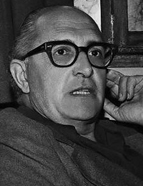

To exemplify, with regard to Romanticism, “glorious, unburied corpse” he states that “defining it is just like defining what everybody thinks they know it is … at the risk of (…) being proved to us that it does not exist or that it is exactly the opposite of what has been defined” (Idem, p. 83). By not separating the work of art from the social, political, and cultural context underlying its creation, Sena reinterprets traditional conceptualisations, and in the specific case of Romanticism, argues that the movement was late to manifest itself in Portugal, contending that, in many aspects (Garrett’s “sexual scepticism” which contrasts with the idealised eroticism of Romanticism, Camilo’s irony and caricature-like realism, Júlio Dinis’ “aesthetic impersonality” contrary to Romantic subjectivism, etc.) it asserted itself as Counter-Romanticism.
He uses similar reasoning with regard to 16th-century Renaissance: when, following a period of change in the social and cultural structures, the Renaissance was disseminated from Italy to the rest of Europe and arrived in Portugal, it was no longer the Renaissance but Mannerism (Idem, p. 100). In addition to redefining concepts and historical periodisation, a clear urge was noted in essays, such as those compiled in Estudos de Literatura Portuguesa, to reinterpret the works of Oliveira Martins, Bernardim Ribeiro, Antero de Quental and Sá de Miranda from this multifaceted perspective which immerses itself in historical knowledge with a view to grasping new meanings and ensuring the precision of literary criticism. In “Sobre Gil Vicente [On Gil Vicente]”, Sena rejects António José Saraiva’s views on the progressive and Brechtian nature of Gil Vicente, to describe the 15th-century playwright’s thinking as one of “a reaction to all forms of modern spirit” (Idem, p. 32). This example reinforces the theory that Sena believed that it was impossible to separate a work of art from its time and that in order to fully absorb it in all its complexity it was necessary to understand the ways of thinking, the culture, politics, and social structures that influenced its creation, instead of making analogies with present-day works of art and phenomena. Hence, acknowledging that history is fundamental to understand art, it is no wonder that in an essay entitled “A viagem de Itália” [“Journey through Italy”] he explains how Sá de Miranda’s journeys through Italy between 1521 and 1526 contributed greatly to the renewal of 16th-century Portuguese literature. (Idem, p. 59).
Jorge de Sena did not just write essays of historiographical interest. He also published texts which, explaining the importance of studying history when writing on literature, contribute to an understanding of his approach as a literary critic and historian.
